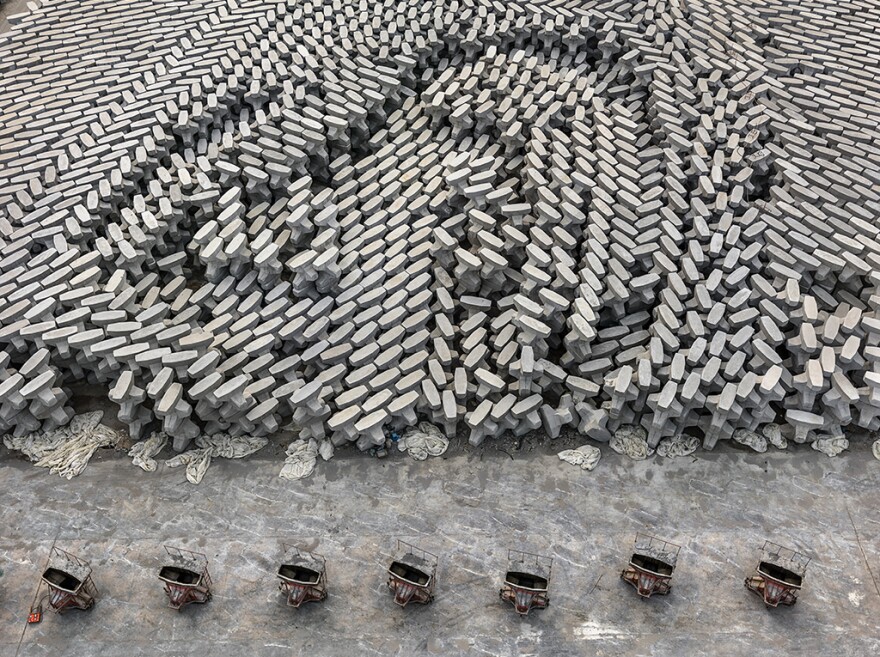Updated July 15, 2023 at 6:35 AM ET
Humans have made an indelible mark on the planet. Since the mid-20th century, we've accelerated the digging of mines, construction of dams, expansion of cities and clearing of forests for agriculture — activity that will be visible in the geological record for eons to come.
Some scientists are calling it the Anthropocene era, or the age of the humans ("anthropos" is Greek for human). And this week, geologists announced that a lake in Canada could be used to identify the start of this era. The body of water holds layers and layers of undisturbed mud that have collected human pollution and radioactive elements, signs of the way humans have transformed the planet. Geologists will vote on the official Anthropocene designation next summer.
Photographer Edward Burtynsky and filmmakers Jennifer Baichwal and Nicholas de Pencier were inspired by this ongoing discussion of the debate over this new geological era. These three Canadian artists traveled to 22 countries to research and document "places of obvious, physical human incursions on the landscape," says filmmaker de Pencier.
They created over 50 images capturing the impact of humans on the Earth, like a sprawling, 30-acre garbage dump in Kenya, large swaths of deforestation in Borneo and waterways damaged by oil siphoning in Nigeria.
Their expansive, multidisciplinary body of work is called The Anthropocene Project.
The project, which includes photography, film, virtual reality and augmented reality, took four years to complete and launched in September 2018. The exhibition has been shown at museums around the world; it opens in Taiwan at Kaohsiung Museum of Fine Arts in a month.
"[The Anthropocene Project] is almost looking back from a projected future, from the future geologist investigating what will remain in the rock record long after we're gone," de Pencier adds.
Here is a selection of photographs from the project.






Copyright 2023 NPR. To see more, visit https://www.npr.org.



